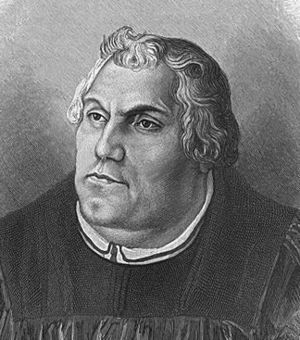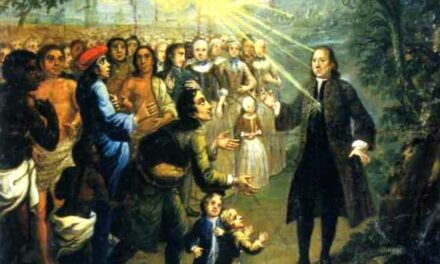This episode is title “Pressed.”
In our last episode, we took a look at the French church of the 17th C and considered the contest between the Catholic Jansenists and Jesuits.
It’s interesting realizing the Jansenists began as a theological movement that looks quite similar to Calvinism. Their theology eventually spilled over into the political realm and undercut the Divine Right of Kings, a European political system that had held sway in for centuries, and reached its apex in France under Louis XIV, granting him the august title of The Sun King
In this episode, we’ll take a look at what happened to the French Protestants, the Huguenots.
By the mid 16th century, Huguenots were 10% of the French population. They hoped all France would one day adopt the Reformed Faith. But their hopes were shattered by defeat in nine political and religious wars.
You may remember from an earlier episode that Henry IV, a convert to Catholicism from Protestantism, that conversion being a purely pragmatic and political maneuver, granted the Huguenots limited rights in the Edict of Nantes in 1598. Thirty years later, those rights were revoked by the Peace of Alais. Then the fortified Protestant city of La Rochelle surrendered in 1628, ending any hope of France’s conversion to Protestantism.
For twenty-four years, Louis XIV waged a devastating anti-Protestant campaign. Nearly 700 Reformed churches were closed or torn down. And in 1685, Louis replaced the Edict of Nantes with the Edict of Fontainebleau.
He ordered uniformed troops called dragoons to move into the Huguenot homes in Protestant centers. These troops were allowed by the king’s decree to use whatever means they wanted, short of murder and rape, to intimidate Huguenots into converting to Catholicism.
Some 200,000 Huguenots fled France. They took refuge in Geneva, Prussia, England, and North America. Those refugees were often people of great learning and skill who enriched the intellectual and economic life of their adopted realms.
But thousands of Huguenots stayed in France. Many made a show-conversion to Catholicism, while secretly remaining Protestants. They formed an underground church known as the “Church of the Desert.” From 1684 to 98, twenty Huguenot pastors were hunted and killed.
Louis XIV feared the Huguenots because he equated them with the Puritan rebels who’d executed Charles I in England in 1649. Louis was also in competition with the Holy Roman Emperor, Leopold I, for hegemony in Europe. Allowing a large and politically powerful Protestant base in his realm didn’t commend Louis as a strong Catholic leader. He already faced criticism for not sending troops to defend Vienna from invading Turks while Leopold had. It was Louis’s plan to attack the Turks AFTER they’d taken Vienna! His plan fell apart when the Europeans managed to defeat the enemy before Vienna’s walls.
Louis’ suspicion of the Huguenots seemed justified by the Camisard War of 1702 to 4. They called for “freedom of conscience” and “no taxes.” Protestant prophets predicted a liberation from their oppressors. But the prophets were proven to be of the false variety when the revolt was put down.
In 1726, an underground seminary for young men was established in Lausanne, Switzerland. It received financial support from Protestants in Switzerland, England, and the Netherlands. Studies lasted from six months to three years. After that, graduates returned to minister to outlawed churches in France. If captured, they were executed.
During the Seven Years War, known in the US as the French and Indian War, French Protestants became the beneficiaries of unofficial toleration. While no friend to Christianity, Voltaire assisted Huguenots by writing a book defending toleration. Finally, in the Edict of Toleration of 1787, Louis XVI gave Huguenots the right to worship.
But in the three years BEFORE that, 7000 Huguenots were executed, another 2000 forced to serve in the French Navy, a kind of living death if you know anything about the life of a lowly sailor at that time.
After 1760, some Reformed pastors, influenced by Voltaire, moved toward theological liberalism.
From the late 17th to late 18th century, what we know as Germany today was a patchwork quilt of over 300 mostly autonomous principalities, kingdoms, electorates, duchies, bishoprics, and other political enclaves. Rarely used, the term “Germany” meant a nebulous region that included many of these regions, much like the term “Europe” refers to a continent with many nations. Germany was just one part of a larger entity known as the Holy Roman Empire. That realm included 1,800 territories. Places like Poland, the Hapsburg Empire, Bohemia, Moravia, Austria, Hungary, Serbia, Transylvania, and Italy.
A Council of Electors, ranging from seven to nine, picked the Holy Roman Emperor.
The Emperor’s ability to raise armies, collect taxes, and make laws was often hampered by the many groups in the empire that enjoyed a measure of their own sovereignty. The fiction known as the Holy Roman Empire ended under Napoleon.
In the 1740s, Frederick the Great, King of Brandenburg-Prussia from the Hohenzollern family and Calvinists since 1613, challenged the Hapsburg’s power. At the outset of the War of the Austrian Succession, Frederick’s troops seized Silesia and Prussians became THE military power in Europe.
In Germany, the leading kingdoms were Brandenburg-Prussia, Saxony, the Rhineland Palatinate, Hanover, and Bavaria. Following the principle established by the Peace of Westphalia, the religion of these kingdoms was that of their prince.
While Bavaria was staunchly Catholic, Brandenburg-Prussia was Calvinist with strong pietistic leanings. The rest of Germany was Lutheran of the pietist mold. A unified Germany nation would not emerge until the days of the “Iron Chancellor” Otto von Bismarck in the second half of the 19th century.
The emergence of Prussia as a great military power in the 18th century impressed their European neighbors. The kingdom’s army of some 83,000 ranked fourth in size among the European powers, though its landmass was a tenth of the area and only thirteenth in population. Its rulers promoted a disciplined lifestyle like that of the Pietists as a model for Prussian bureaucrats, military, and nobles (called Junkers). The highly militaristic Frederick III ruled Brandenburg from 1688 to 1713. Being reformed in theology, he encouraged French Huguenots who’d fled France to settle in his kingdom. In 1694, he founded the University of Halle as a Lutheran university. He welcomed Pietists like Jakob Spener and Hermann Francke. In 1698, Francke began teaching theology there. Frederick III made the University of Konigsberg another Pietist center.
In his work Pious Desires, published in 1675, Spener, who you’ll remember was the founder of Pietism, centered his call for reform of the Church in the faithful teaching and application of Scripture. He called for daily private Bible reading and meditation and the reading of Scripture in small groups.
Spener urged that pastoral training schools should not be places for theological wrangling, but as “workshops of the Holy Spirit.” Nor should seminary professors seek glory by authoring lofty tomes filled with showy erudition. They ought instead to be examples of humble service. Spener emphasized the priesthood of ALL believers. Ministers should seek help from laypeople to assist in the task of tending to the needs of a congregation instead of assuming they had to do everything themselves. Spener took this idea from what the Apostle Paul had written in Ephesians 4. As described there, pastors were to equip believers so they could do ministry.
At the University of Halle, Hermann Francke insisted that those training for pastoral ministry ought to study Scripture in its original languages of Hebrew and Greek. Francke wrote: “The exegetical reading of Holy Scripture is that which concerns finding and explaining the literal sense intended by the Holy Spirit Himself.”
In 1702, Francke founded the Collegium Orientale Theologicum. Advanced students could learn Aramaic, Arabic, Ethiopian, Chaldean, Syriac, and Hebrew.
Francke established an orphanage in Halle in 1695. He created schools and businesses including a printing house where orphans could learn a trade. By 1700, Francke’s various institutions gained the support of Emperor Frederick III, who valued their contribution in fostering Christian discipline among his students, the Prussian populace, and his soldiers. Francke wanted to make Halle a center for Christian reform and world missions. In anticipation of what George Mueller would later give testimony to, Franke wrote of examples of how he prayed for specific needs and provision came to feed the poor and keep the schools open, sometimes arriving at the last moment. He wrote: “These instances I was willing here to set down so that I might give the reader some idea both of the pressing trials and happy deliverances we have met with; though I am sufficiently convinced that narratives of this kind will seem over-simple and fanciful to the great minds of our age.”
On one occasion, Frederick IV, King of Denmark, gave a direct order to his chaplain: “Find me missionaries.” That chaplain asked Francke for help. Francke proposed two students from the University of Halle. The Danish-Halle Mission was launched. On Nov. 29, 1705, Bartholomew Ziegenbalg and Heinrich Plütschau set sail for India. Eight months later they arrived. They were dismayed to discover the horrid immorality of the Europeans there. Claiming to be Christians, the Indians assumed all believers in Christ were immoral. There was great resistance to the Gospel at first, but the missionaries’ faithfulness eventually softened the hearts of the Hindus. Ziegenbalg translated the Bible into Tamil and set up a school and a missionary college before he died at the age of 36.
Christian Schwartz also served as a missionary in India. Johann Steinmetz ministered in Teschen, Silesia, Moravia, and Bohemia. Others took the gospel to Russia during the reign of Peter the Great. Halle missionaries met the physical and spiritual needs of captured Swedish troops who, when they returned to Sweden, spread Pietism in their homeland. Sixty students went forth from the University of Halle as missionaries.
The press of the Bible Institute in Halle produced more than 80,000 copies of complete Bibles and another 100,000 copies of the New Testament.
In 1713, the Pietitst Frederick William I became king. He not only built up the military, he funded the production of thousands of Bibles so that all his subjects could read it for themselves. When he died in 1727, some 2000 students attended the school in Halle. His orphanage served as a model for George Whitefield’s in Savannah, Georgia.
We need to do a bit of summarizing now so we can avoid that thing we’ve talked about before – the reporting of history as a bunch of dates and names. I’ll do so by simply saying the Enlightenment that swept France and England, also impacted Germany. The original faculty of the University at Halle would have been shocked to see the way later professors turned away from what they considered orthodoxy.
We’ll jump ahead to a bit later in the 18th century and the work of Johann Semler considered the Founder of German Higher Criticism.
Semler began teaching at Halle in 1751. He’d been a student of professors who merged Enlightenment philosophy with the Faith. For twenty-two years, from 1757 till ‘79, Semler was the most influential of the German theologians. He called for a more liberal investigation of the Bible, one not tethered to long-held orthodox assumptions about the canon of Scripture or its infallibility.
Semler held forth that religion and theology ought not be linked. He also set a divide between what he called the “Word of God” and “Scripture.” He maintained that not all the books or passages of the Bible were in truth God’s Word and that God’s Word wasn’t limited to the Bible.
He taught that the authors of scripture accommodated their writings to the errant ideas of their times, especially the Jews. Sifting out the authentic Word of God from the mythological, local, fallible, and non-inspired dross in Scripture, by which he meant a belief in the supernatural, was the task of the wise Bible student. Then, once the authentic canon within the Bible was identified, real doctrines would need to be parsed.
Astonishingly, Semler claimed his ideas were faithful to the work of Martin Luther, which they most certainly were NOT!
The reaction to Semler was mixed. Some scholars supported him because his work opened a lot of wiggle-room that allowed them to accommodate the growing popularity of Enlightenment skepticism. But his critics pounced, accusing him of abandoning the inspiration and inerrancy of the Bible.
When Frederick the Great died in 1786, his nephew Frederick William II became King of Prussia. He attempted to rein in the growing volume of literature now exposing the German populace to heterodoxy; that is, ideas outside the pale of orthodoxy, by passing an edict calling for censorship of any work about God and morality. Any such work was to be submitted to a government commission of censors for approval. Several Lutheran pastors resigned in protest, and the main publisher of such works moved his operations out of Berlin. The government feared radical expressions of the German Enlightenment would subvert the faith of the people and their loyalty to the State.
In March 1758, Johann Hamann was converted to Christ and became a brilliant counter to the Enlightenment. He pointed out the errors in Kant’s philosophy and said the light of the so-called “Enlightenment” was cold, more like the moon, compared to that which comes from the Sun of Christian revelation in Scripture and nature.






Hello,
the audio of this episode, plus the next one (139-140) do not appear to show up on the website!? ie, no download and no streaming. Enjoying it all otherwise, cheers
Gary, That was troubling because I have no idea how that happened. Something got messed up int he switch to the new host / server. Fixed now. Thanks for letting me know.
Lance